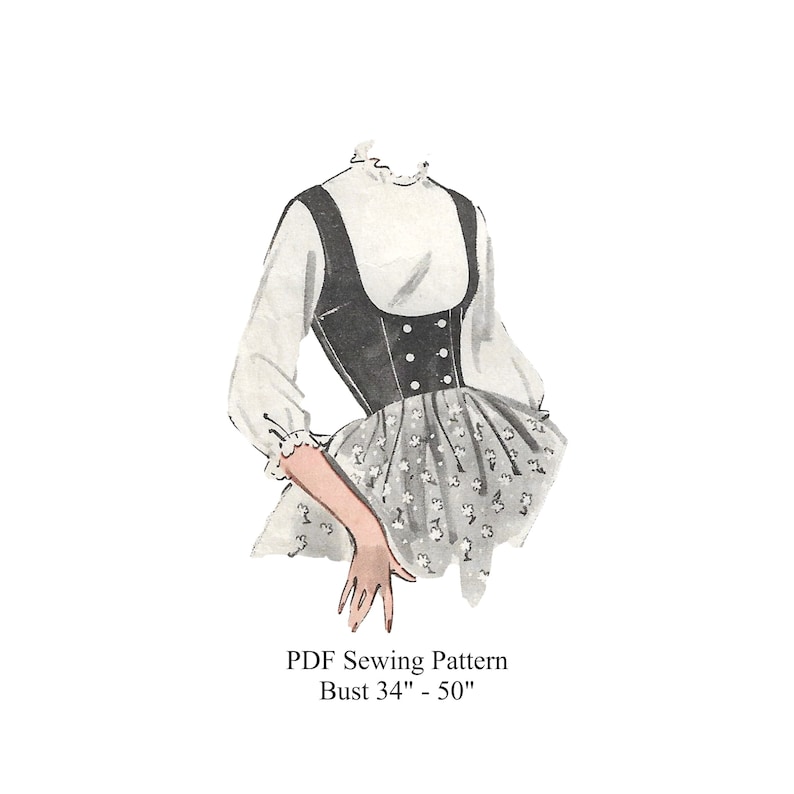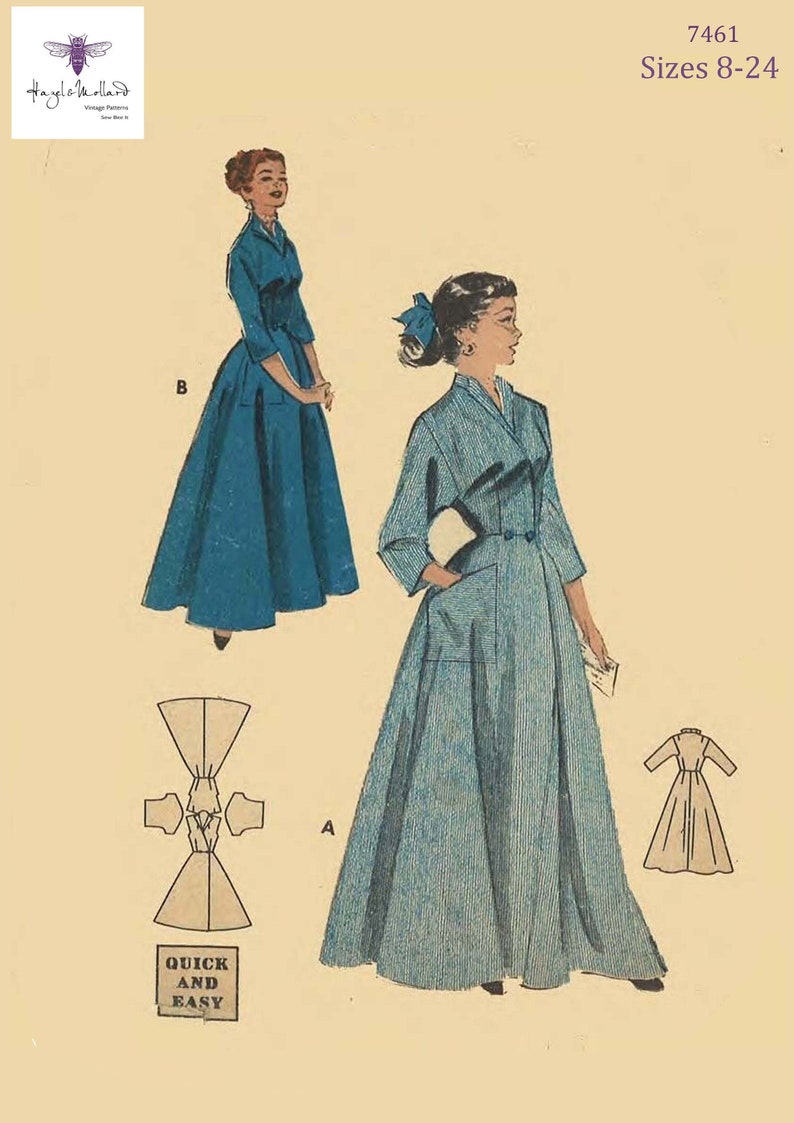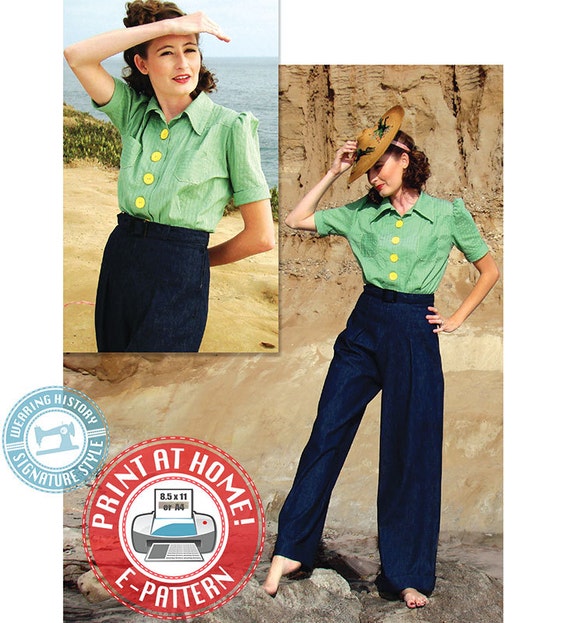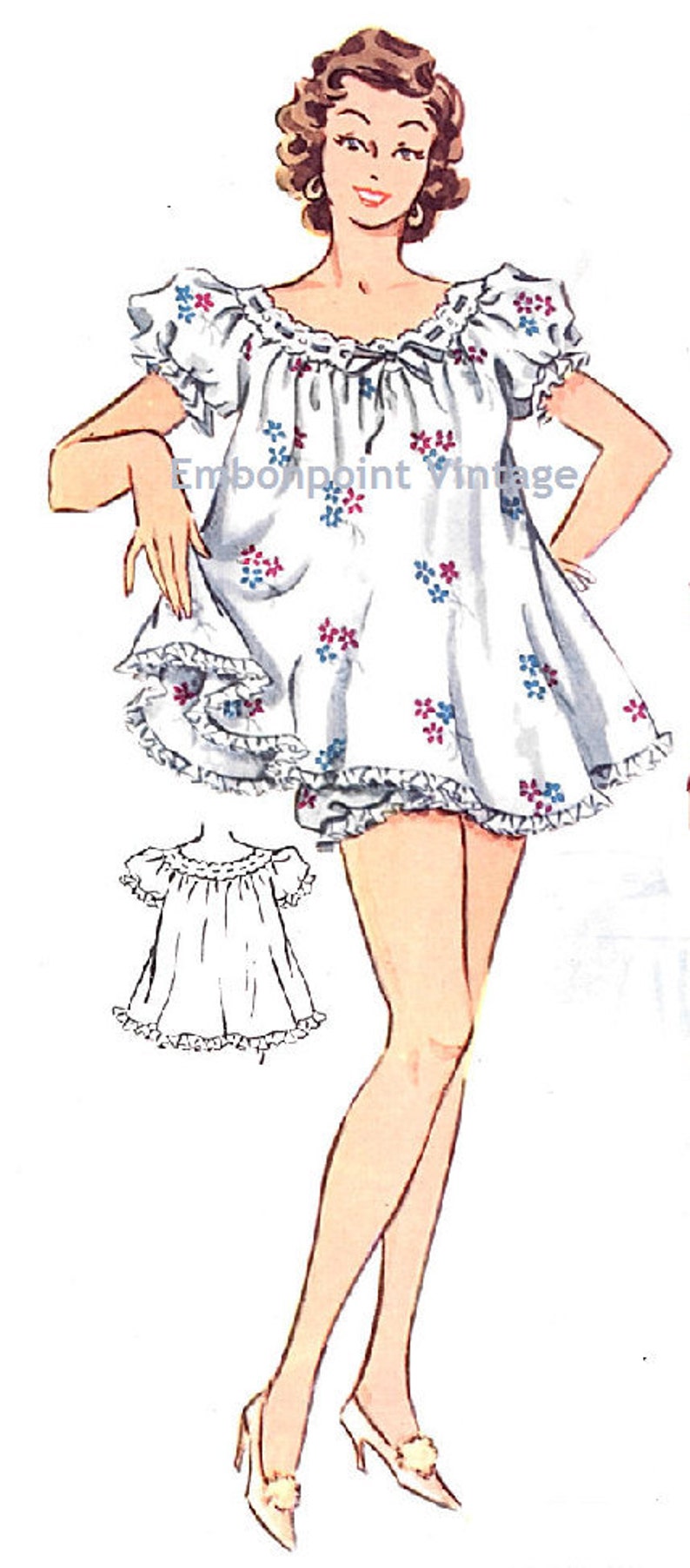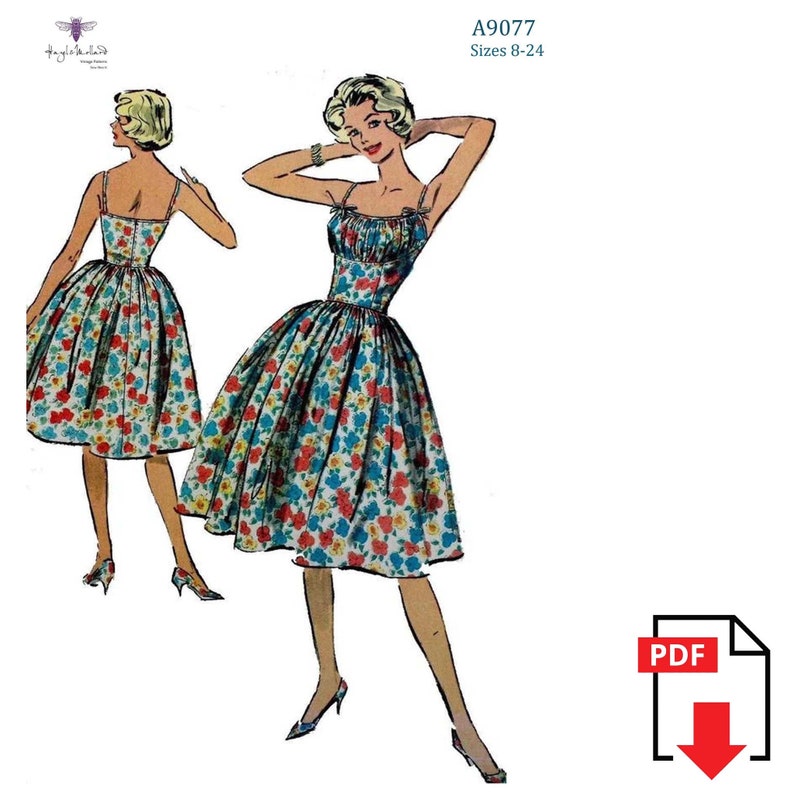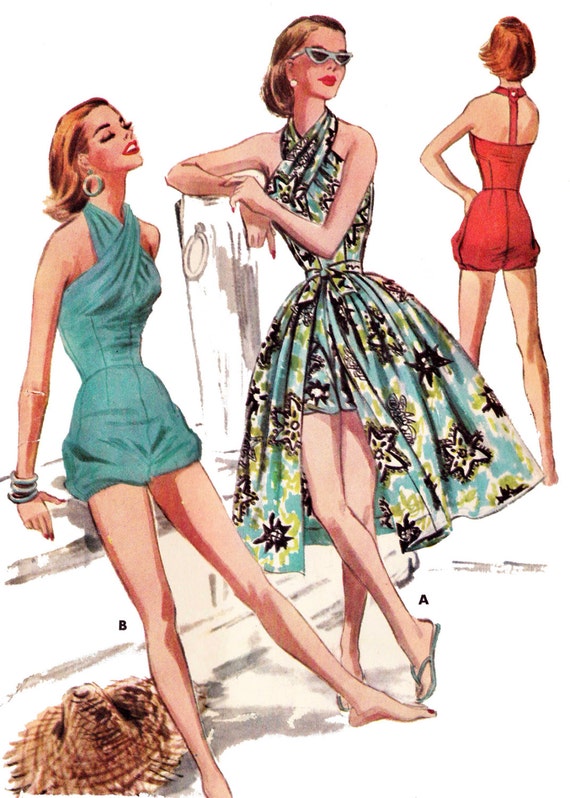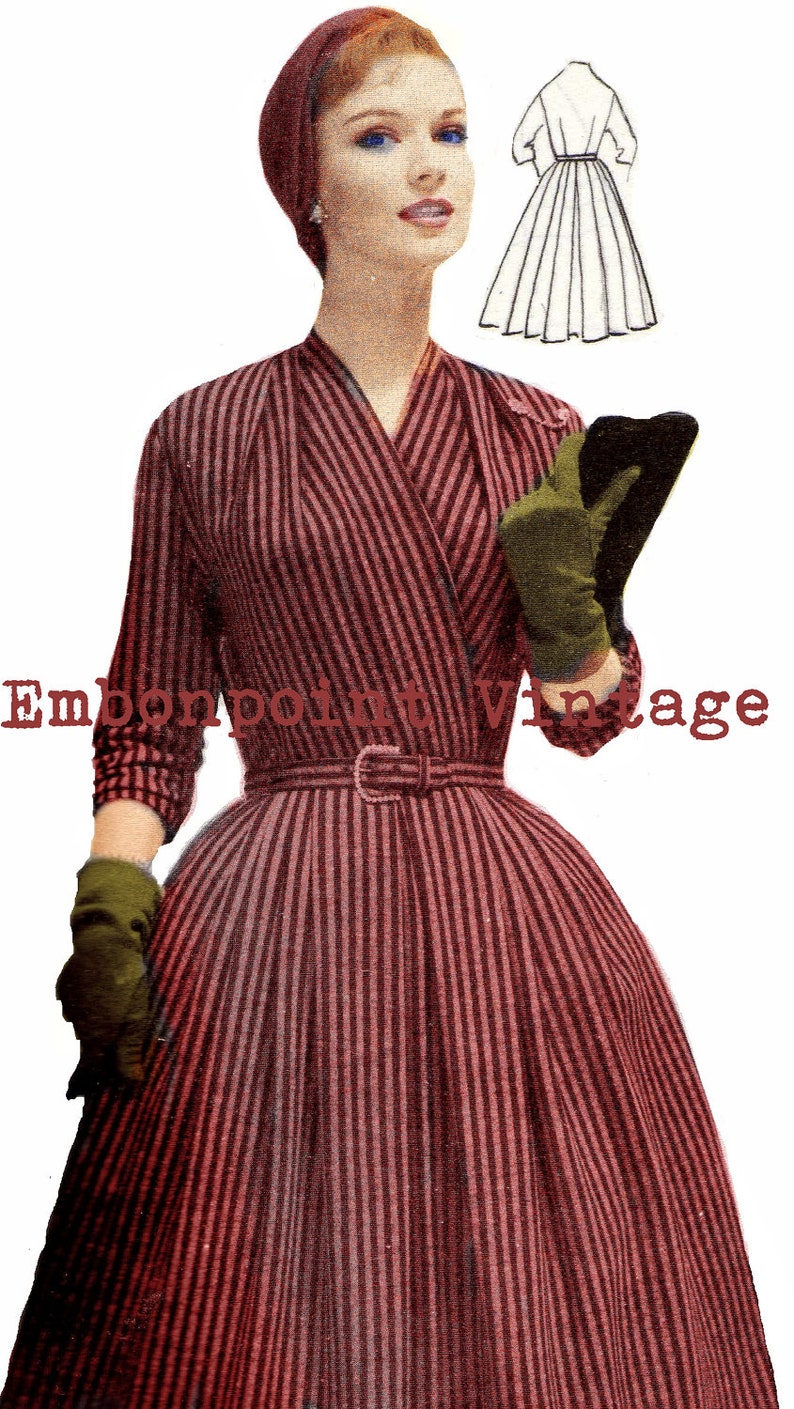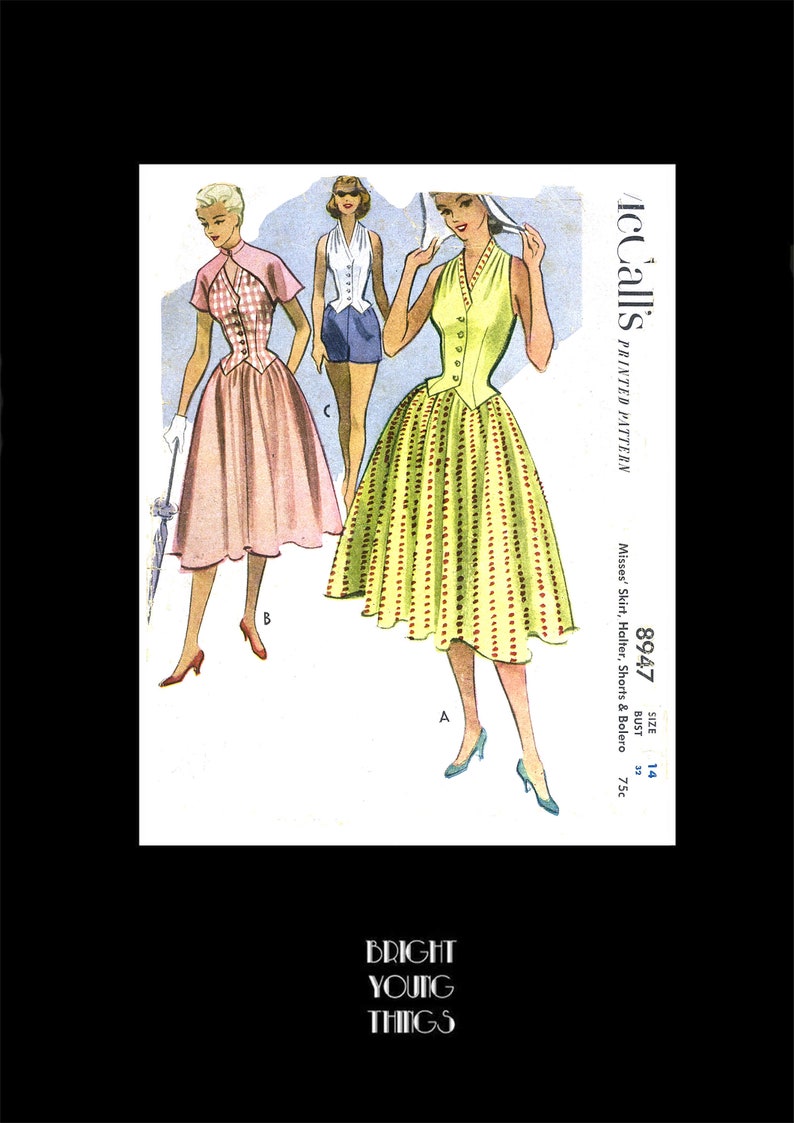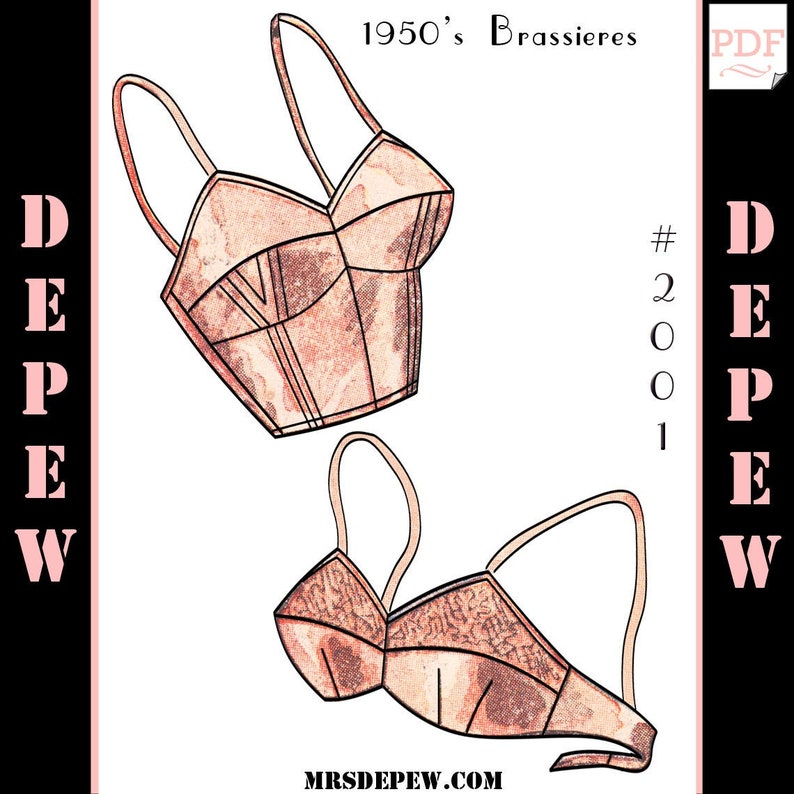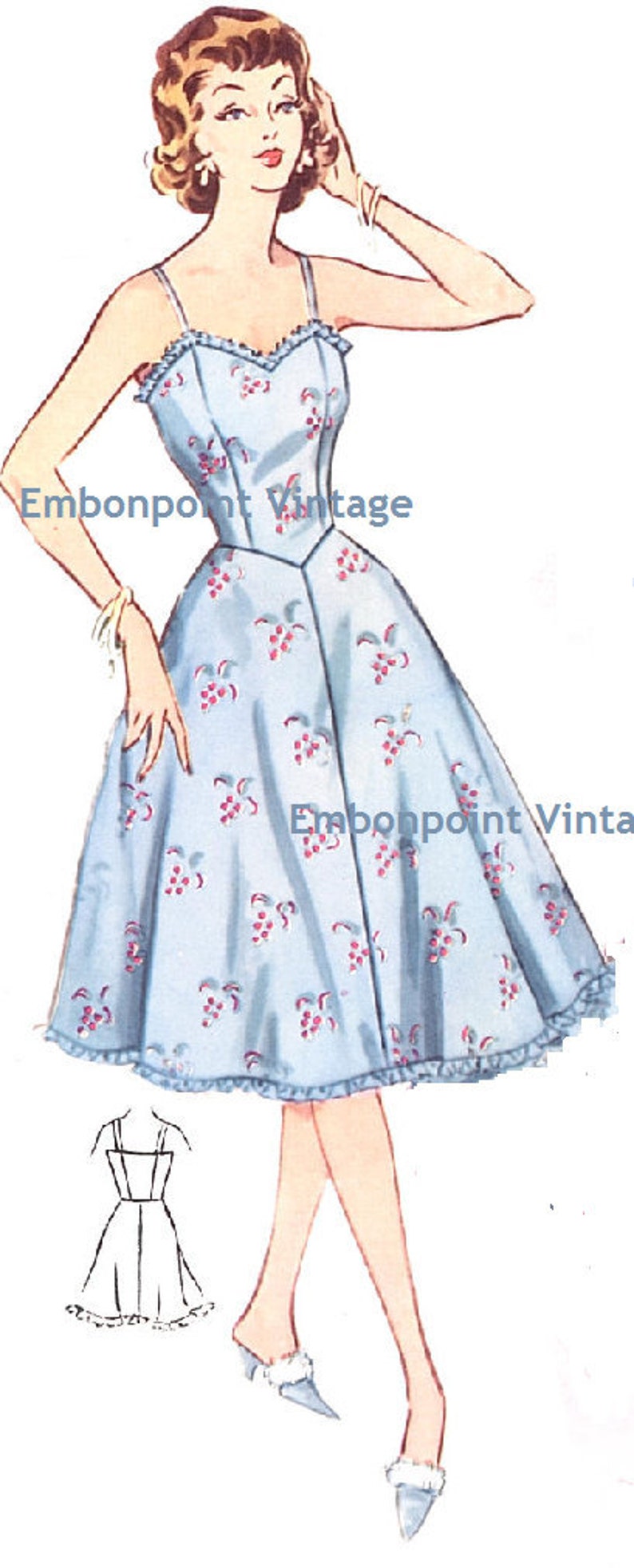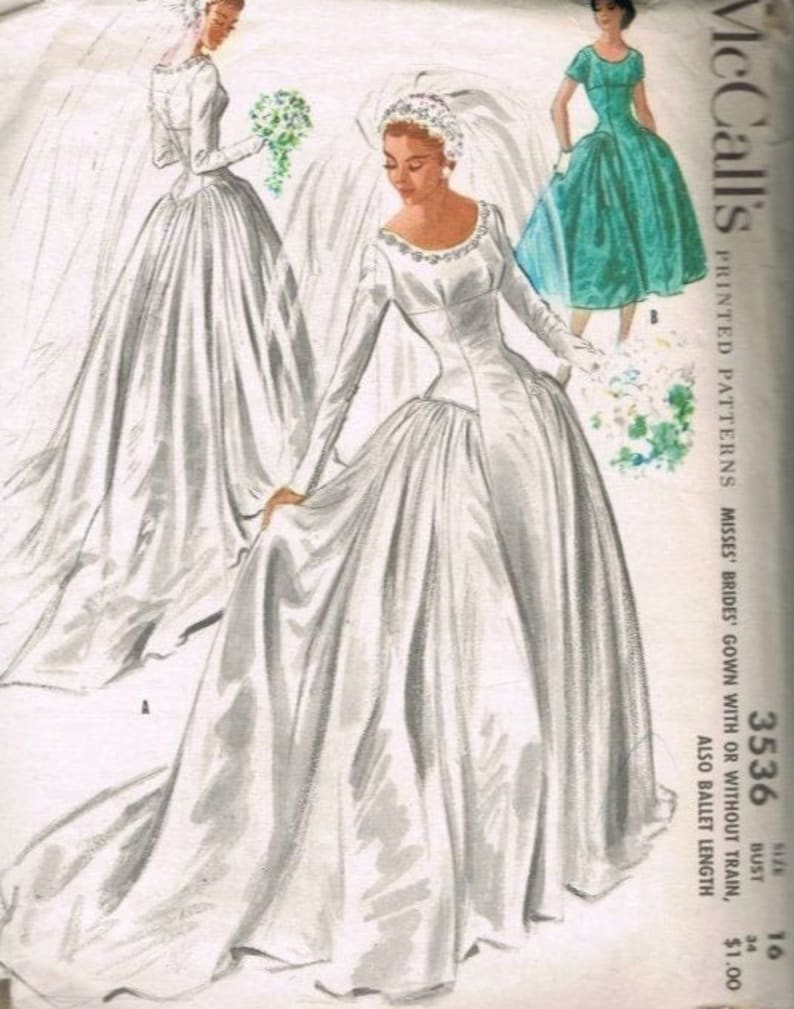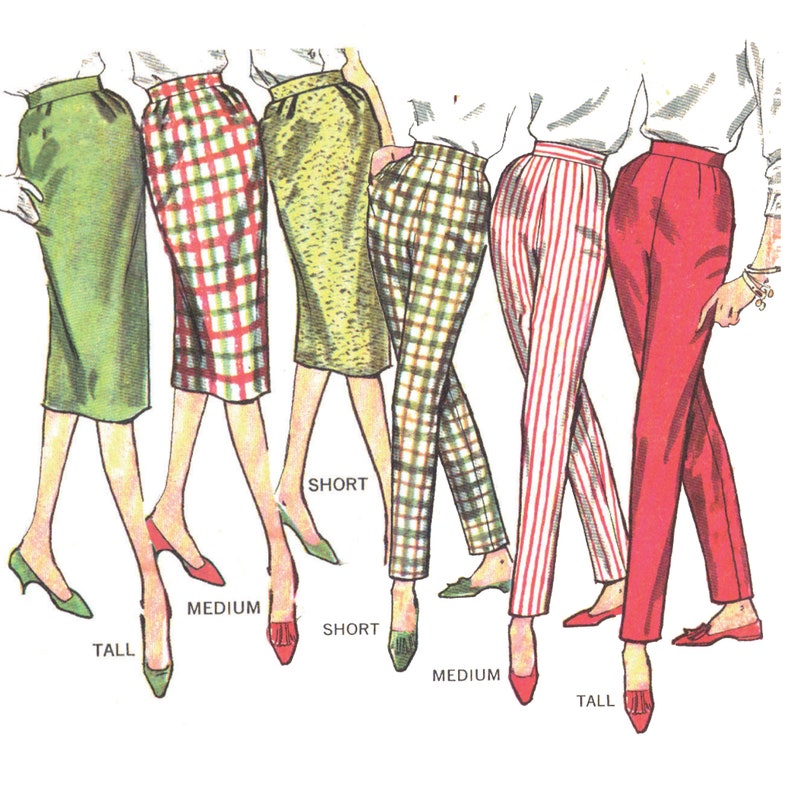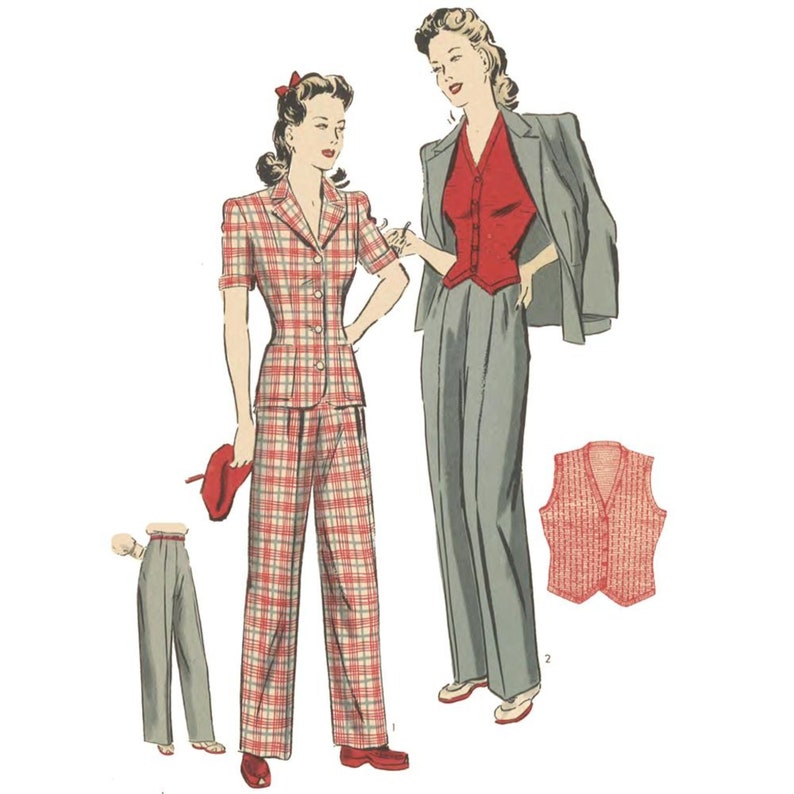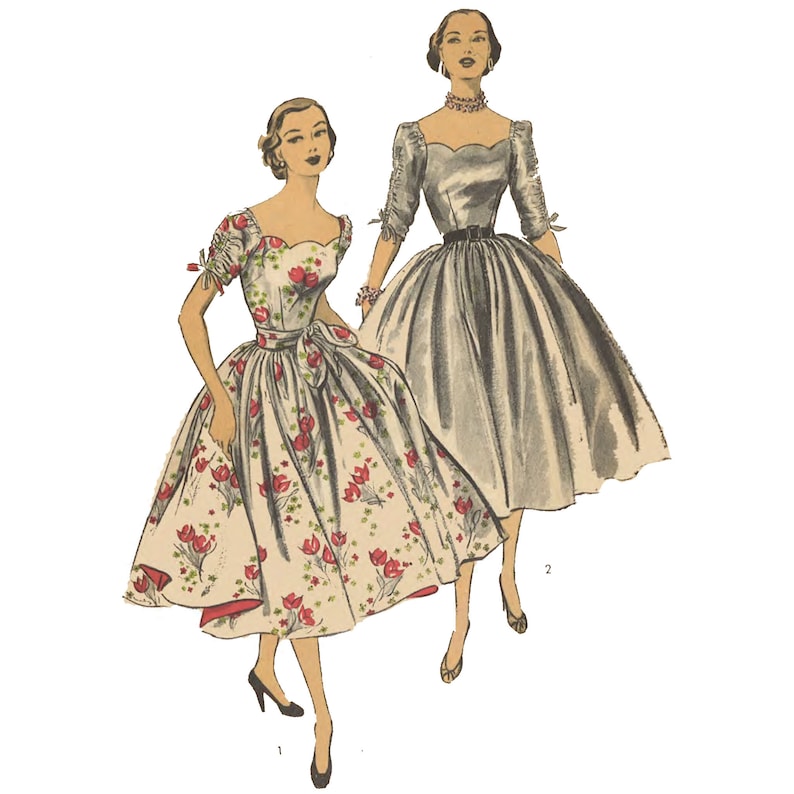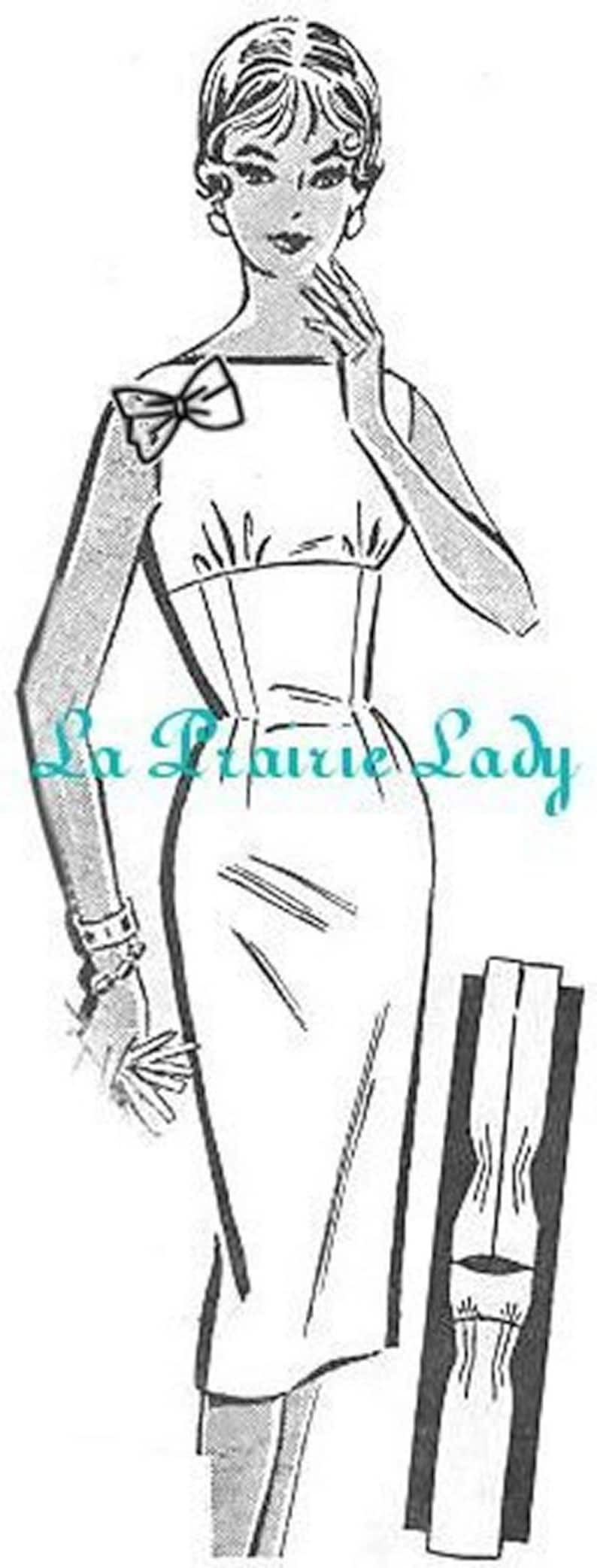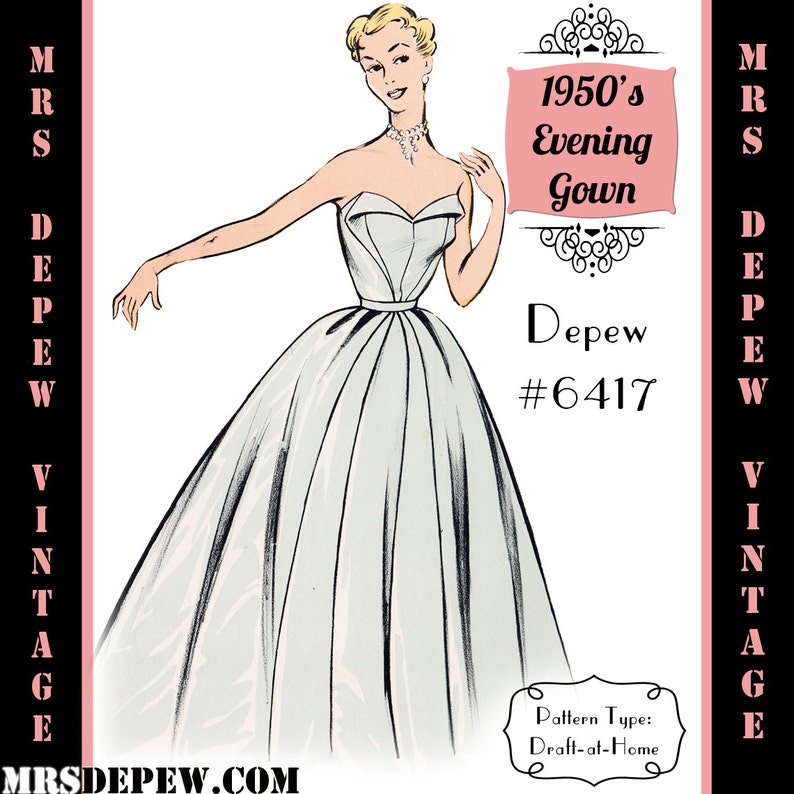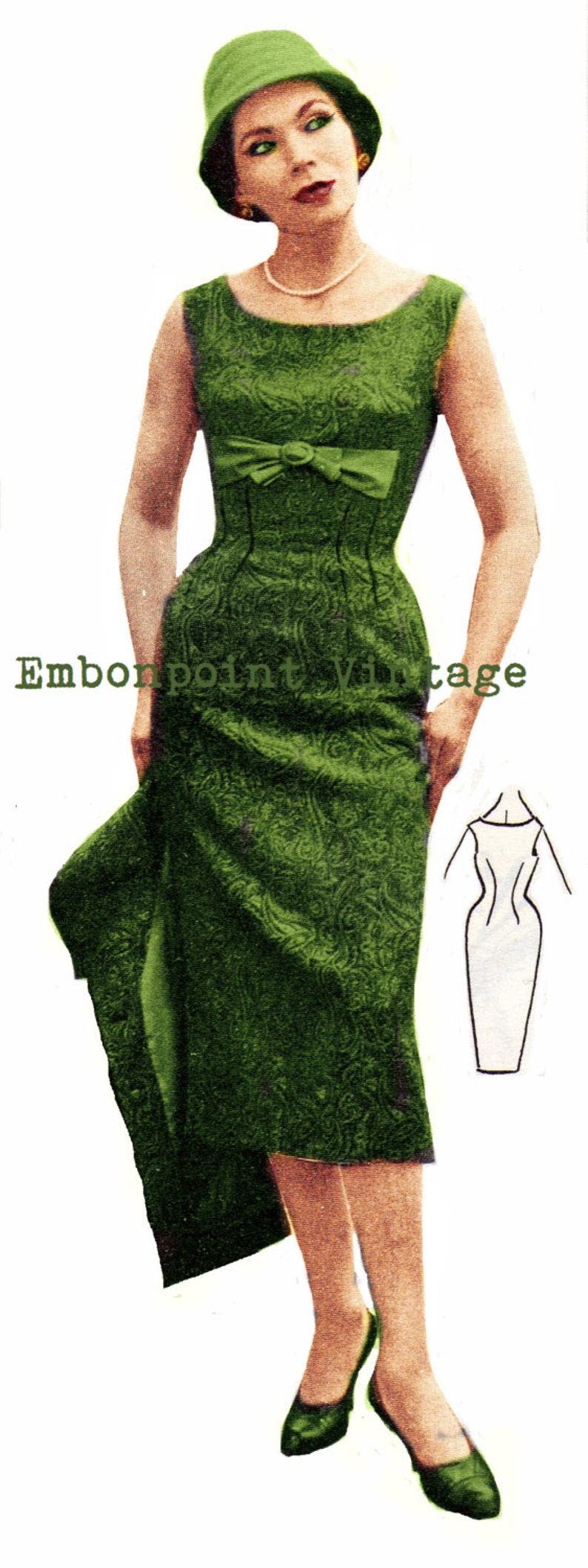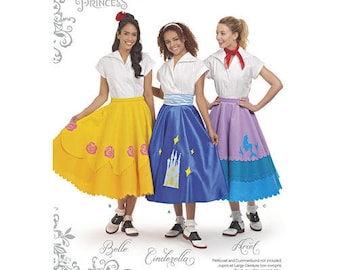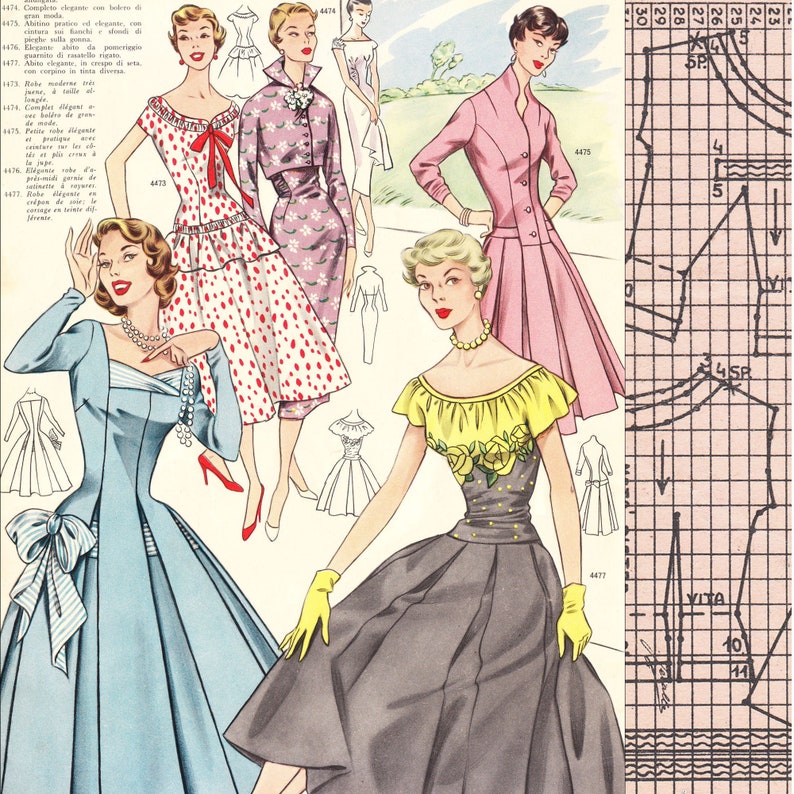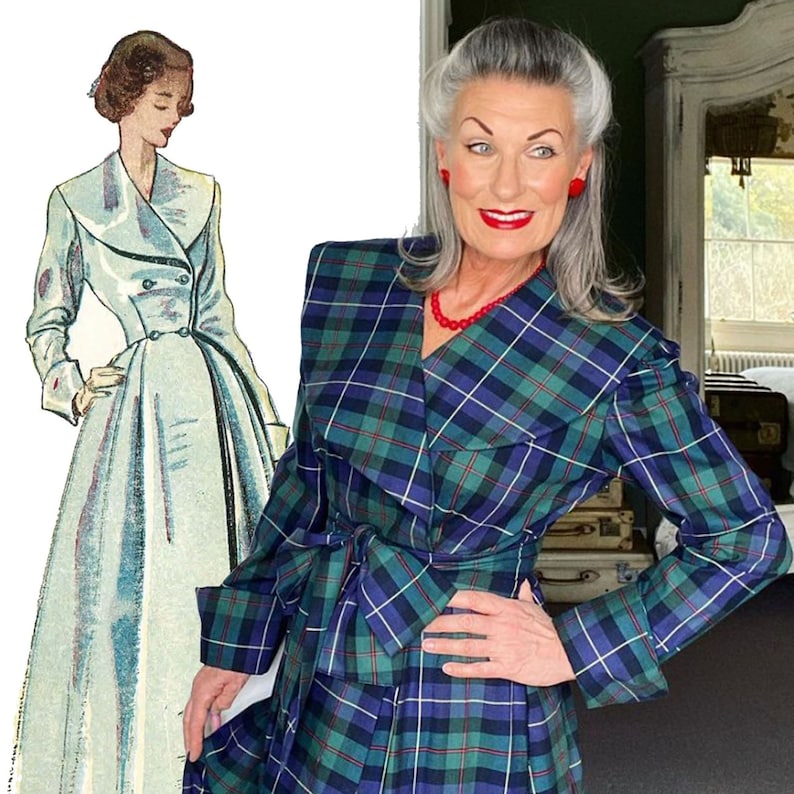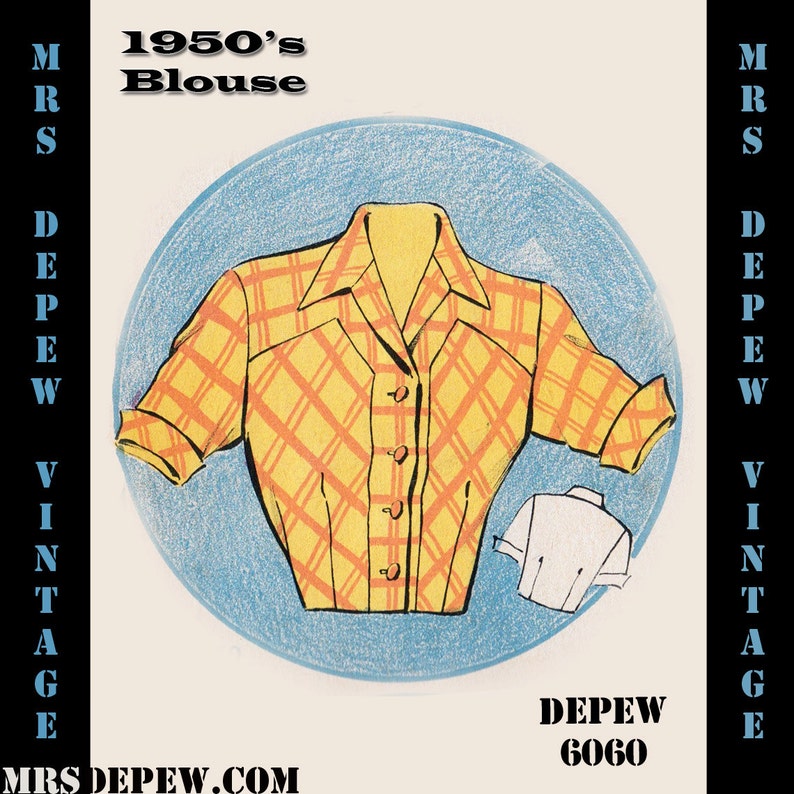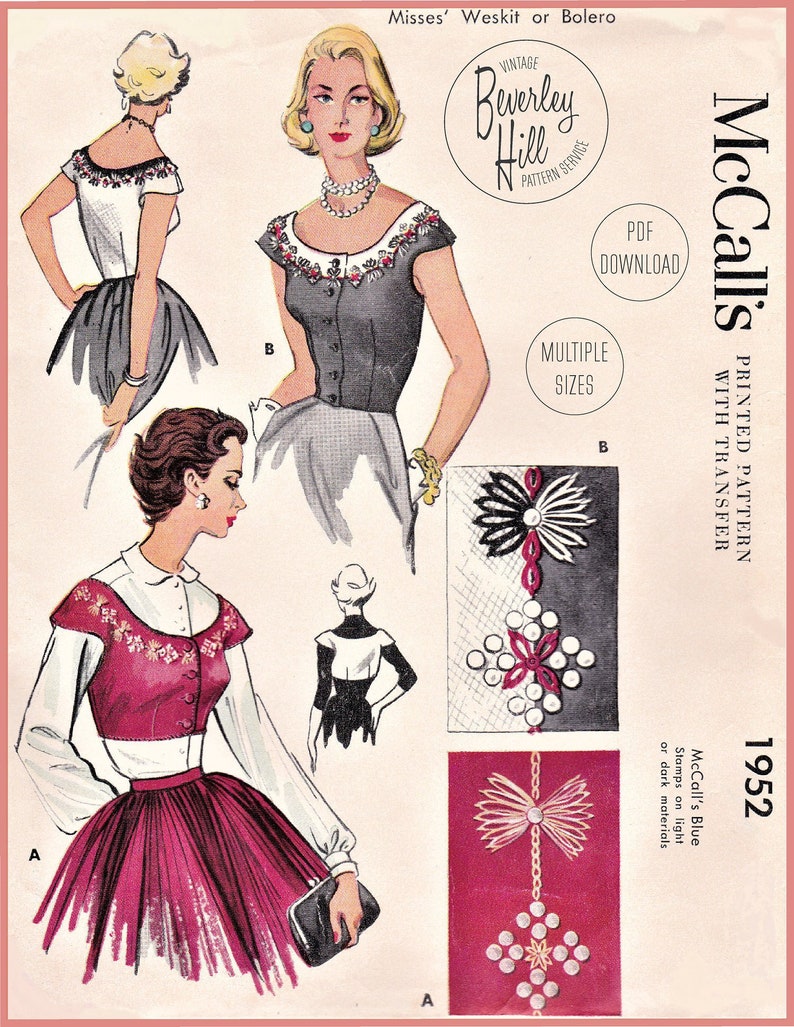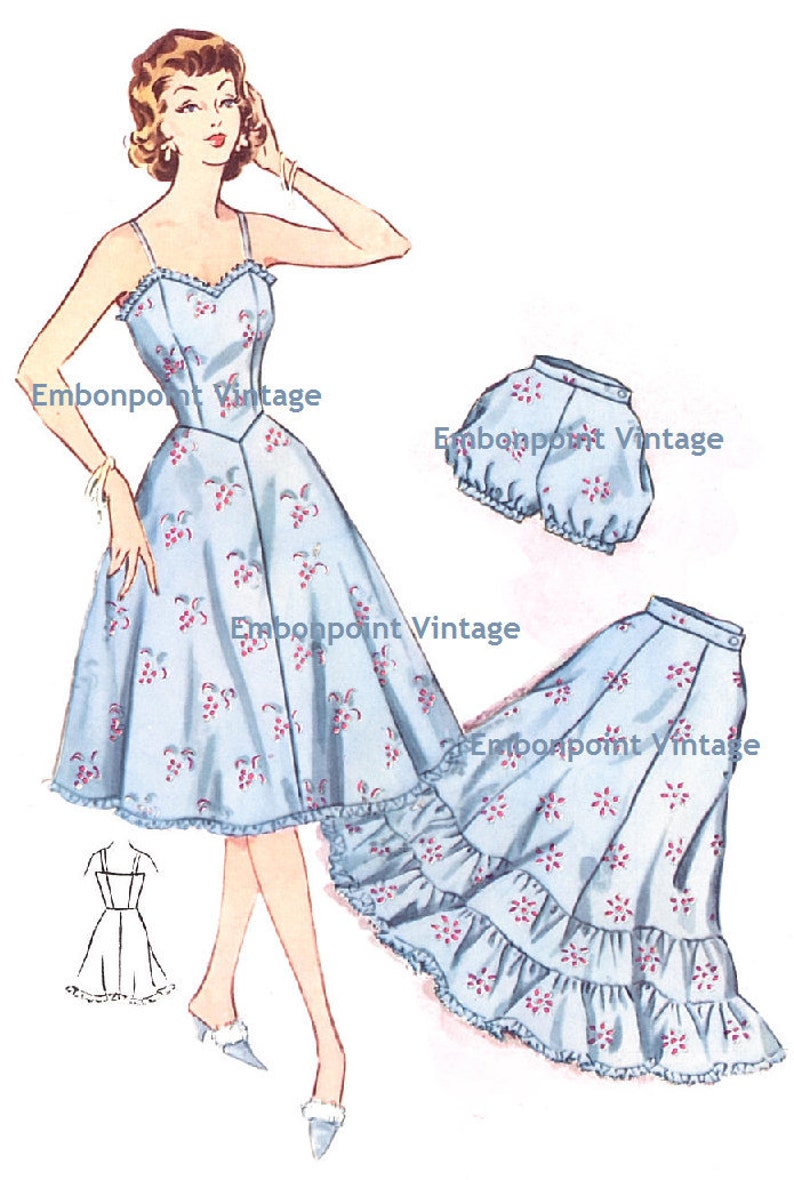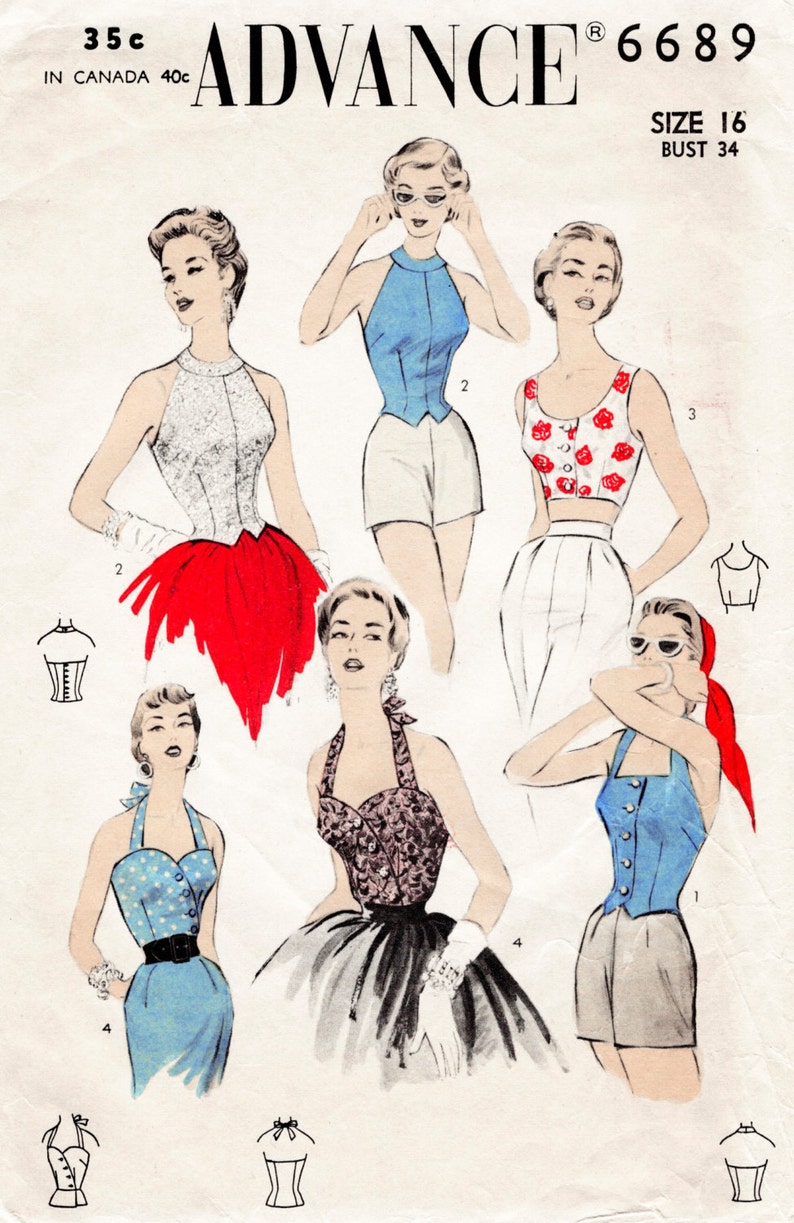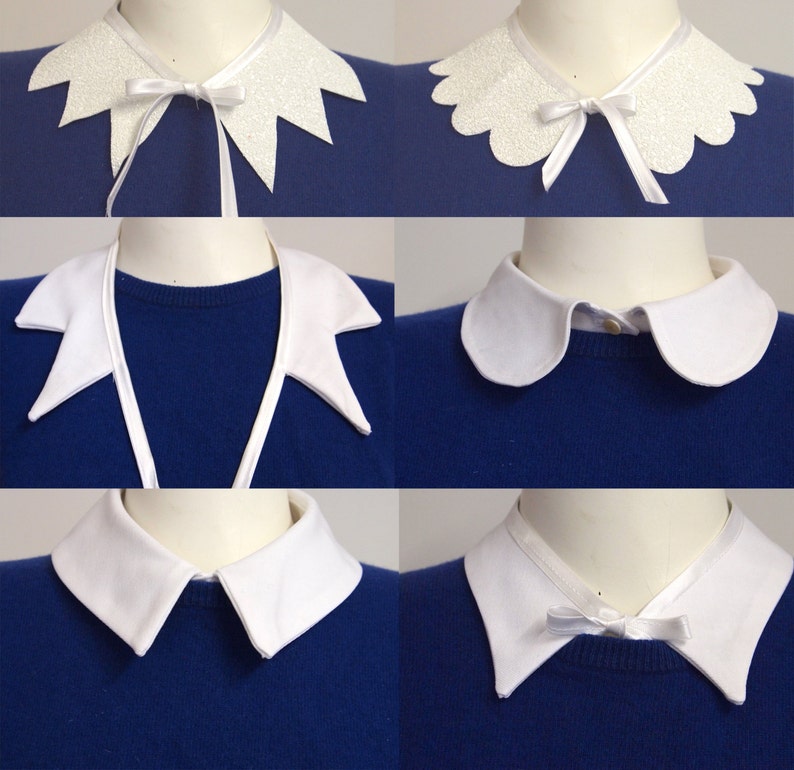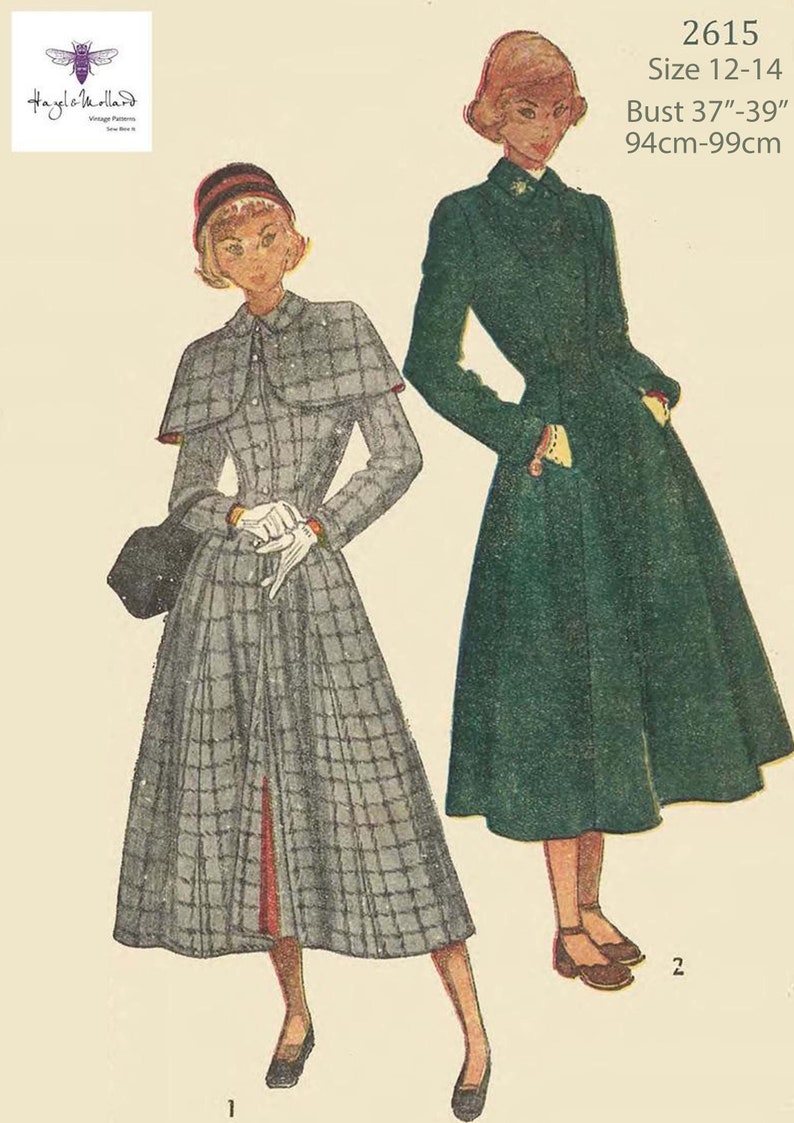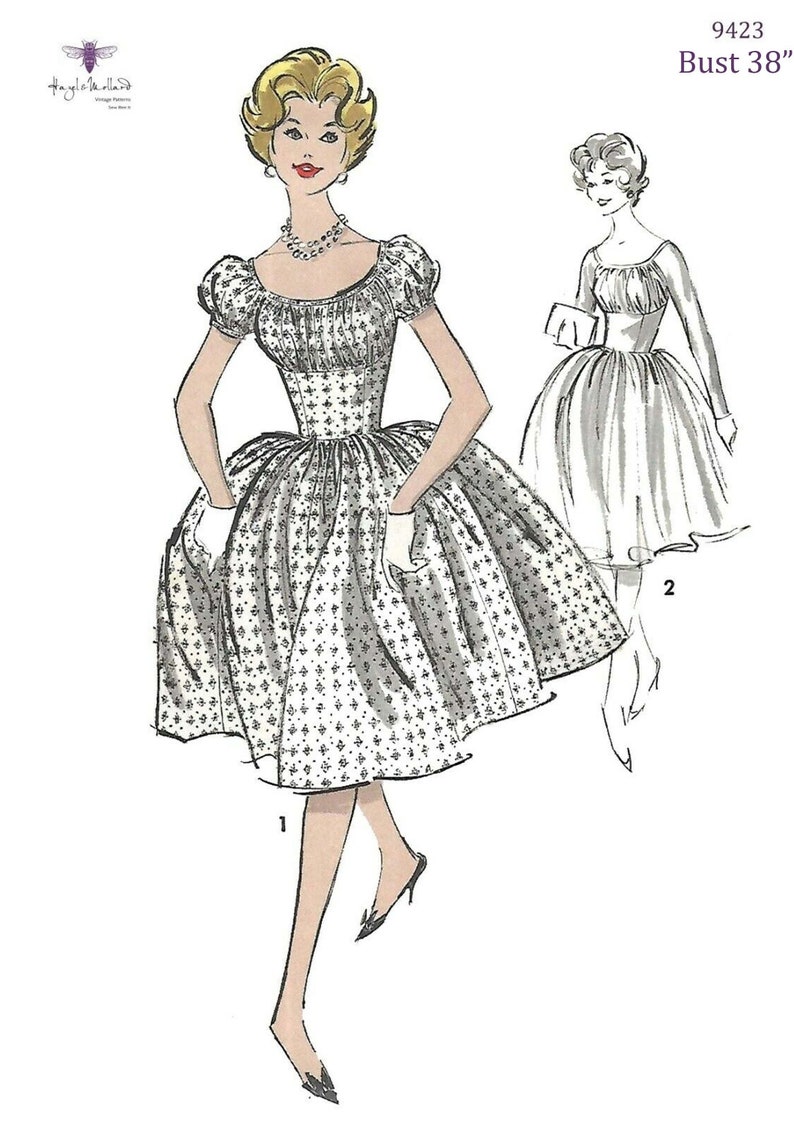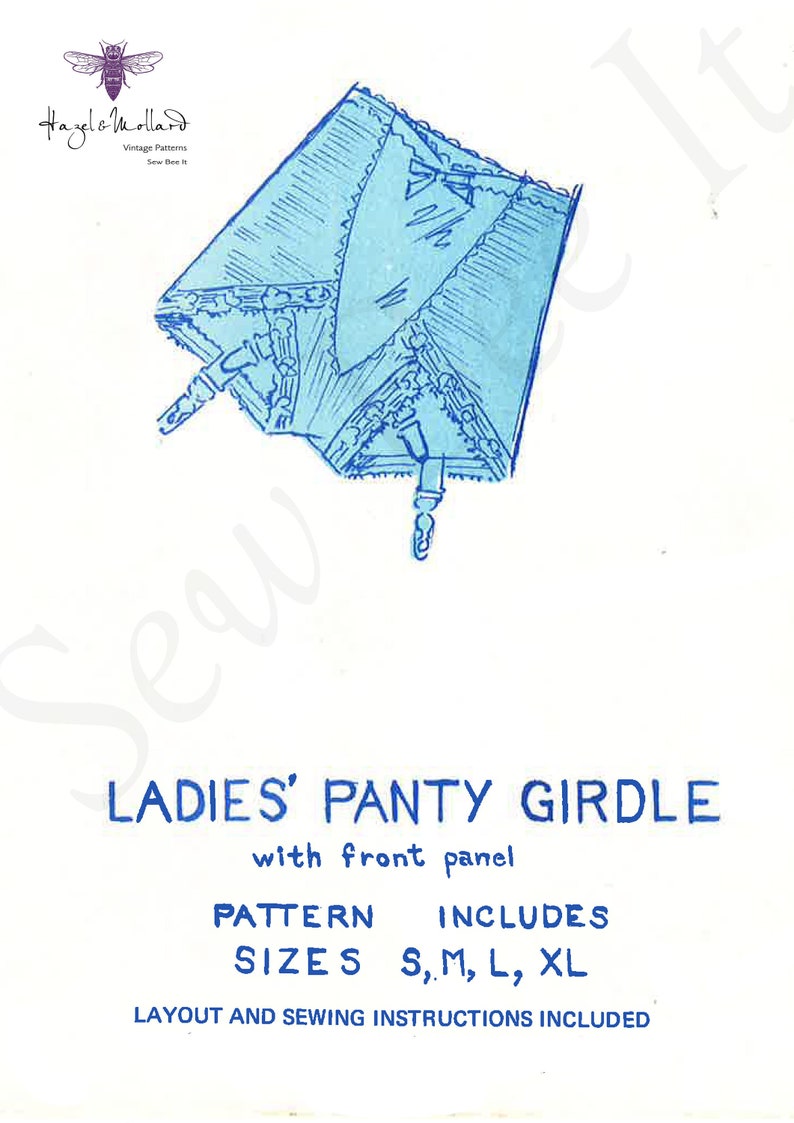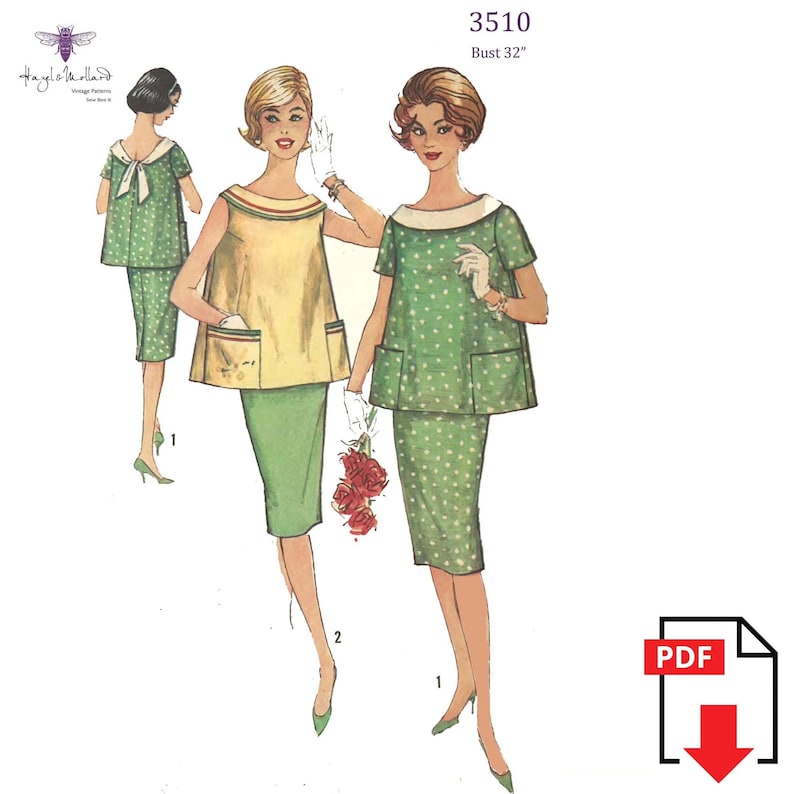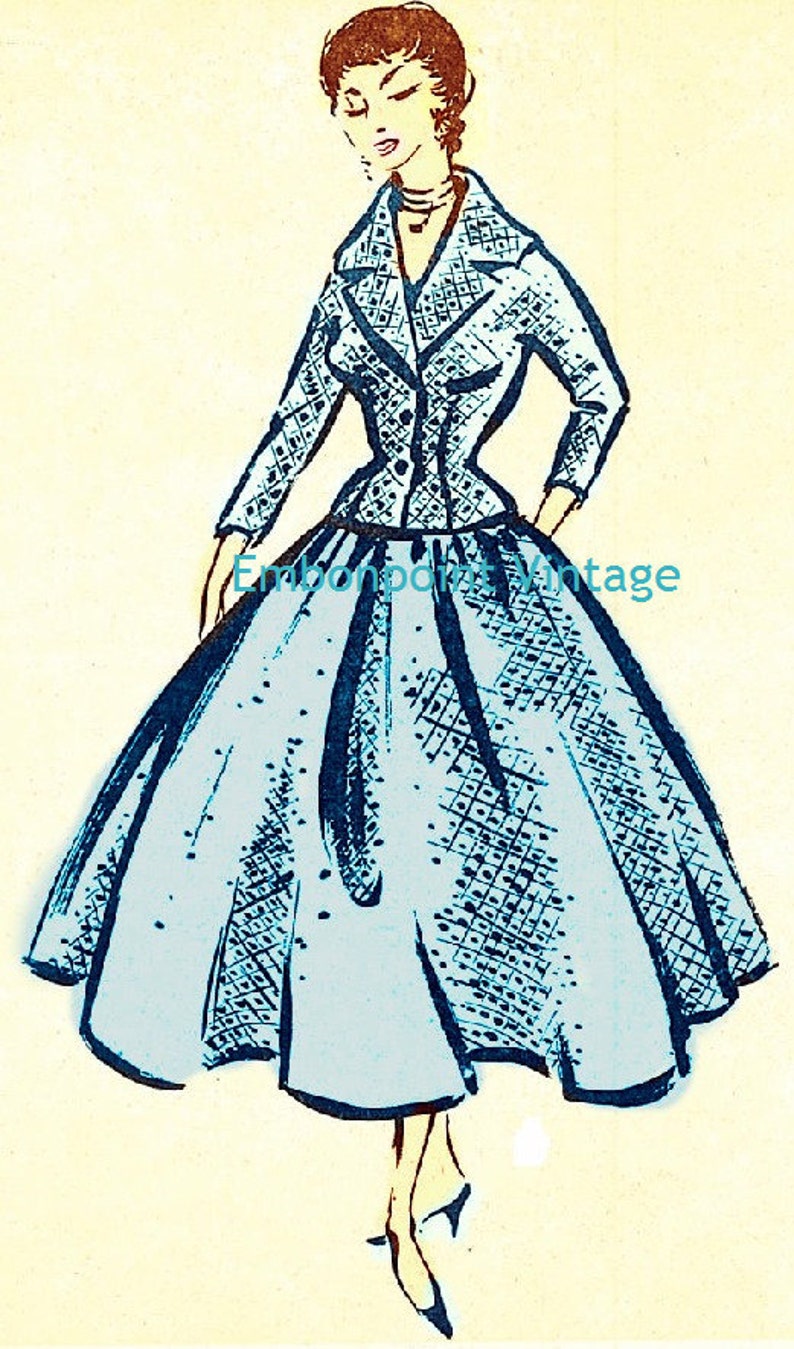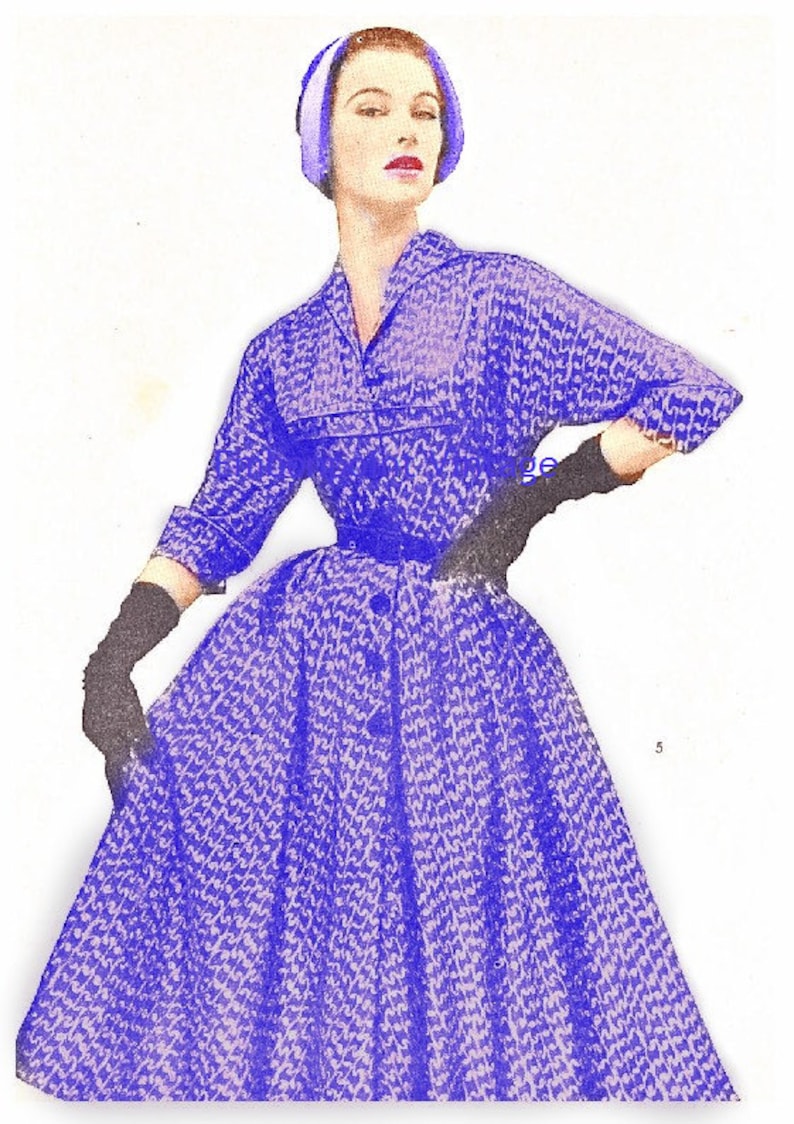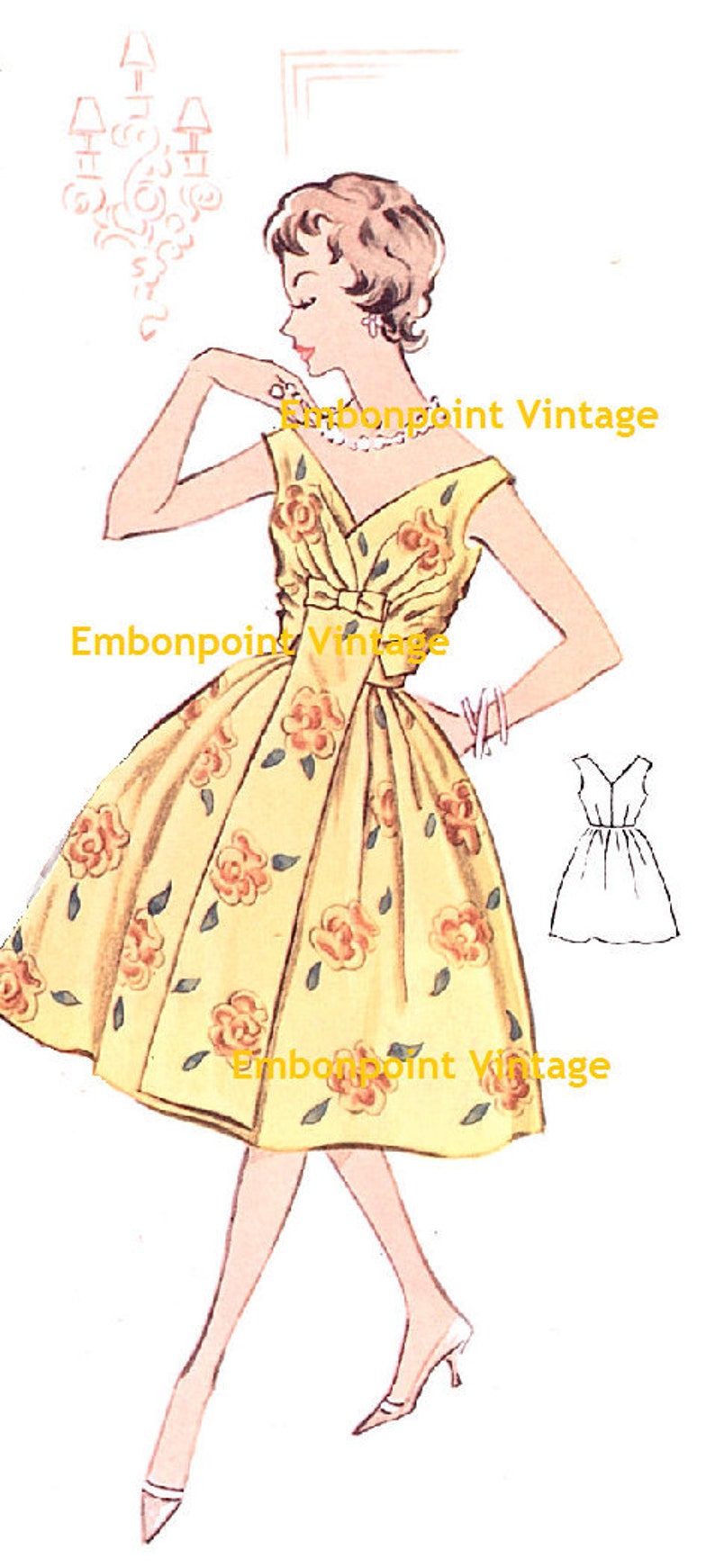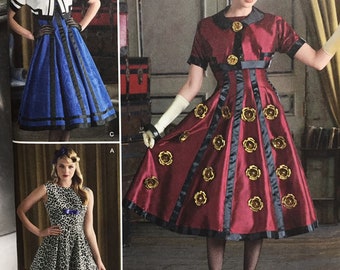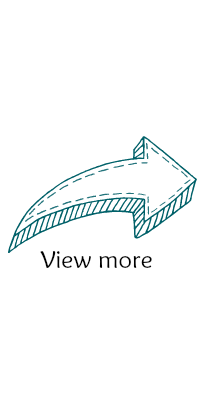Manufacturing processes improved greatly in the 1940s so much that ready-to-wear clothing was almost as affordable as fabric alone. The need and desire to sew clothing at home significantly decreased in the 1950s. For those who still chose to sew their own clothing, the diversity of new fabrics and the variety of colors, prints and textures was bigger than ever. Advancements in new synthetic textiles further reduced the price of fabric. 1950s fashion fabrics were available in nearly every type and color that ready-to-wear came in. As trends changed, new fabrics in new colors were offered to the masses in general stores and shopping catalogs. Sewing patterns, too.
The following is a look at common 1950s fashion colors, types of fabrics, popular patterns, and suggestions on where to buy fabric, notions, and sewing patterns.
1950s Fashion Colors
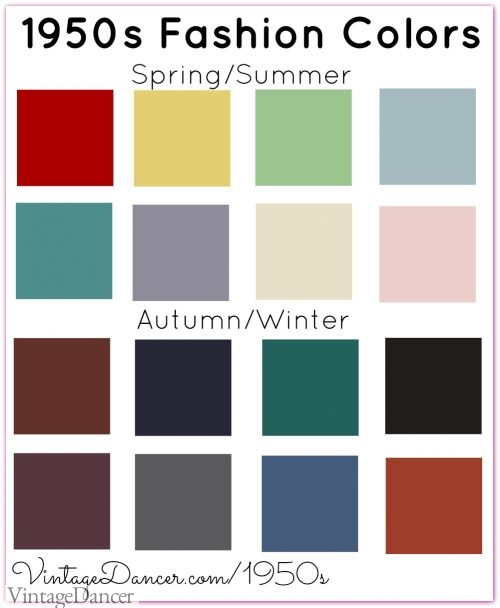
1950s Fashion Colors
While colors came in and out of fashion for most of the decade, there was a certain set that repeated throughout the decade. Like the 1940s, colors were saturated with some pastel shades in spring. Unlike the 1940s, colors drifted from the primary into offset shades like teal, coral, and dark green. In the spring and summer, light pink, powder blue, cream, aqua, rose, maize (yellow), lilac, and kelly green were reflective of youth. In the fall and winter, deep hues of dark brown, rust, black, charcoal grey, red, royal blue, wine, olive, purple, peacock, gold, and navy fit the season. Moving closer to the 1960s, colors shifted into earth tones yet pink, teal, and red remained present.
1950s Fabrics
With the research and production of synthetic fabrics exploding in the 1950s, the sheer number of textile options was overwhelming. Natural fibers (e.g. cotton, wool, and linen) were mixed with new synthetics to create hybrid blends that dried faster, needed less laundering, and repelled stains. Pure synthetics were woven into textures that looked like natural fibers yet had the benefits (and drawbacks) of synthetics. Both natural and synthetic textiles found new uses in the 1950s. Denim, for example, had only been used for workwear, but now was sporty and casual enough for most leisure clothing. Corduroy was favored by men, but now women used it for winter skirts and dresses. There were also less rules about what type of fabric could only be used for certain clothing items.
The following are some of the most common fabrics available to home sewers. This list isn’t exhaustive of all fashion fabrics, but it is a good start.
Cotton: Soft or stiff, cotton could be silky (Sea Island, Egyptian, Pima), light and airy (batiste, voile), embroidered with holes/raised bumps (eyelet/swiss dot), textured (crepe, damask), and smooth (gingham). Some specific cottons are broadcloth and pique (basic), gabardine (twill-like texture), chambray (faded and sturdy), denim (heavy, durable), corduroy (small rows for texture), and seersucker (a waffle weave common in summer stripes – madras is similar). Cotton is easy to sew with, easy to wear, and versatile all year round.
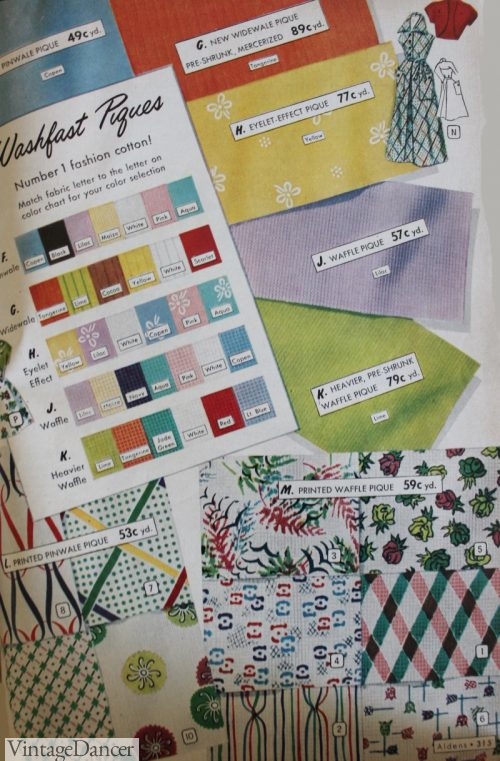
1951 Pique Cottons
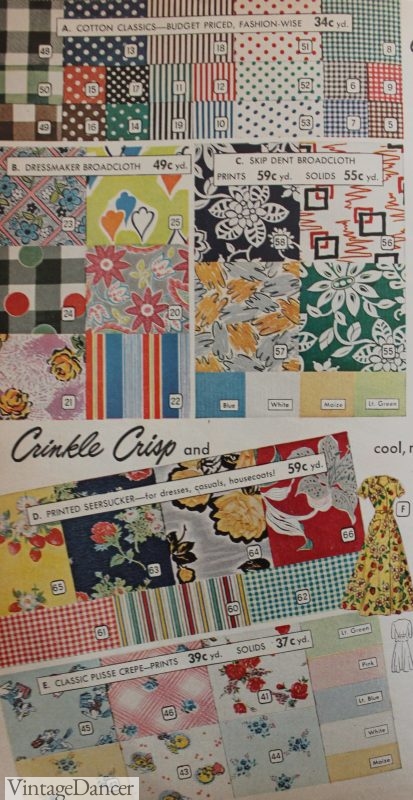
1951 Seersucker, Crepe and Broadcloth Cotton Fabrics
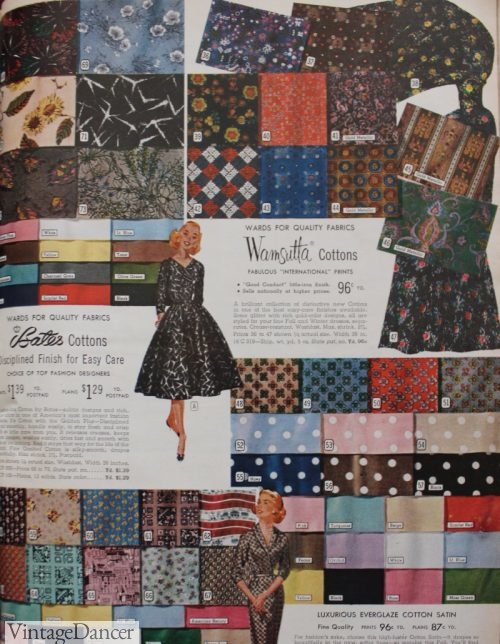
1957 Fancy Cottons and Cotton Satin Fabrics
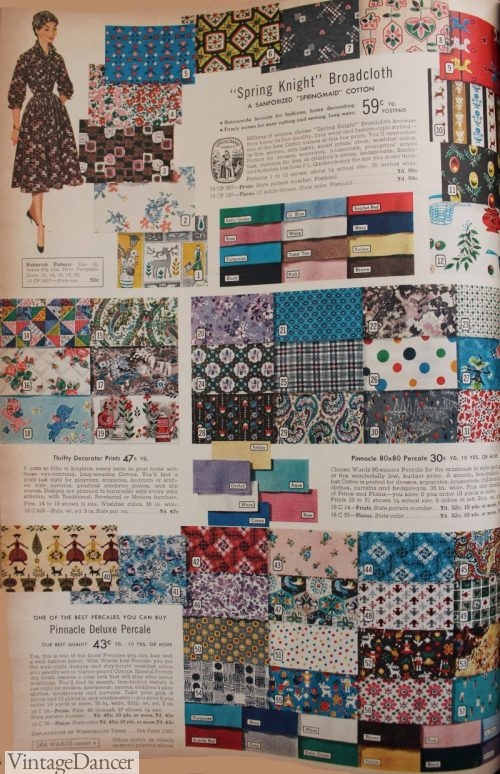
1957 Broadcloth Cotton
Denim: Not just for blue jeans (dungarees), cotton Denim came in multiple weights with bold stripes and plaid patterns. Lighter weights were made into sportswear, children’s clothing and sometimes dresses. Heavy weights were for jeans, work clothing, and outerwear in solid colors. Chambray is a similar medium weight fabric with a white yarn speckled throughout, giving the fabric a faded look. Chambray was used in dresses, aprons, shirts, and children’s clothing.
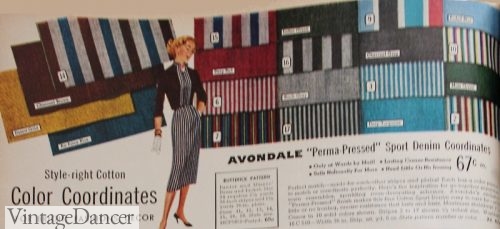
1957 Denim for Winter
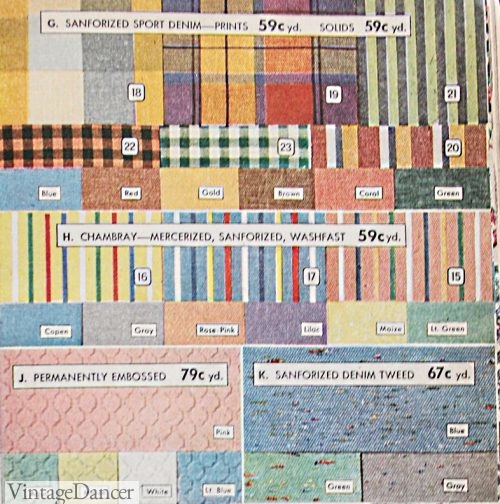
1951 Sport Denim and Chambray
Corduroy: Cotton or rayon fabric with a pile cut into long rows. It came only in solid colors, and was usually a winter fabric because of its heaviness.
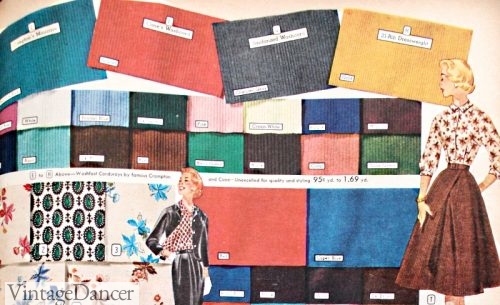
1957 Corduroy Fabric
Silk: A beautiful, light, and expensive fabric saved for evening attire, lingerie, men’s ties, blouses, and some semi-formal dresses. Silk can be perfectly smooth or a have an uneven nap used to make pongee and shantung. Silk could be blended with other fabrics but artificial silk, rayon, was the more popular, durable, washable, and affordable option.
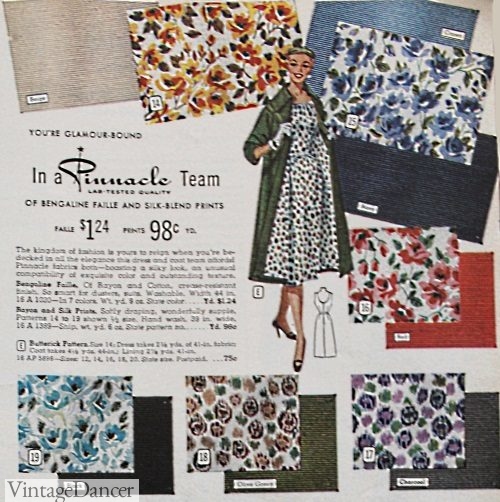
1958 Silk Blend Prints
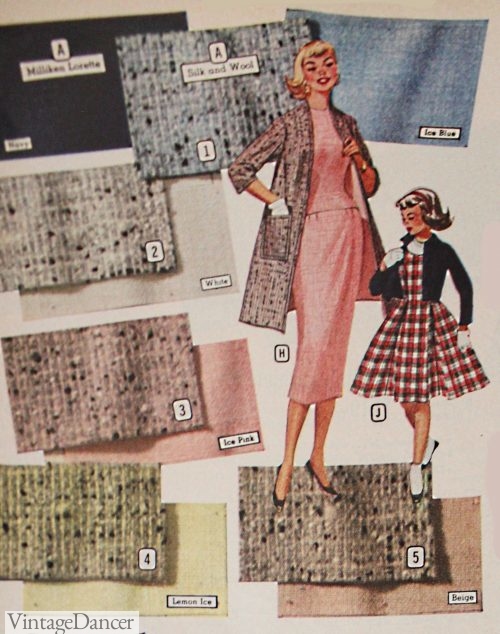
1958 Silk and Cotton Blend for Outerwear
Rayon: A synthetic that can resemble silk, cotton, wool, linen, and most other types of natural fabrics. It washes well, wears long, dyes easily, and blends nicely with natural fabrics to create affordable fabrics. Some versions are prone to shrinking and stretching. It was the primary fabric of the 1940s but lost some favor in the 1950s when other synthetics were developed. It was most popular as a print for dresses.
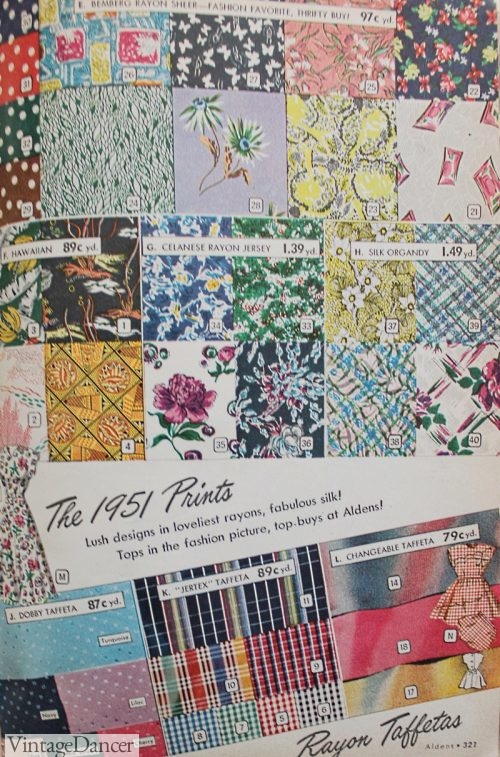
1951 Rayon Prints in Cotton, Jersey, Organdy, and Taffeta.
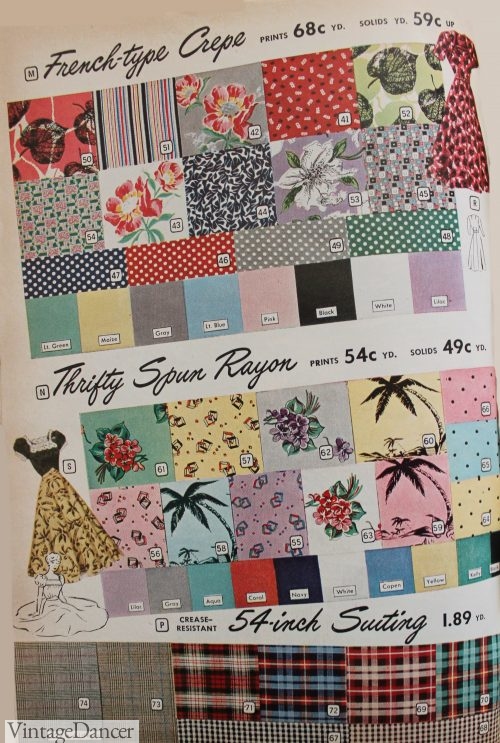
1951 Rayon Crepe, Spun and Suiting Fabrics
Net, Organdy: Net was used in most bridal gowns, bridal party dresses, and prom dresses in the 1950s. It was light, sheer, and voluminous. Velvet flocked net was very popular for both little girls and women’s formalwear.
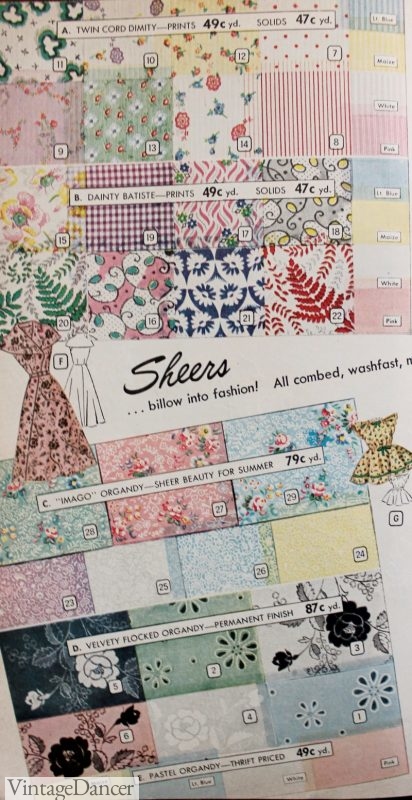
1951 Sheer Fabrics – Dimity, Batiste, Organdy, Flocked Organdy and Pastel Organdy
Flannel: When I think of cotton flannel, I think of cozy winter bed sheets. In fashion, flannel is a nappy wool twill material frequently used for men’s and women’s suits and separates. It’s breathable and light, which makes it very comfortable. Soft cotton flannelette for nightgowns and pajamas came in small novelty prints, thin stripes, plaid, and pastel solids.
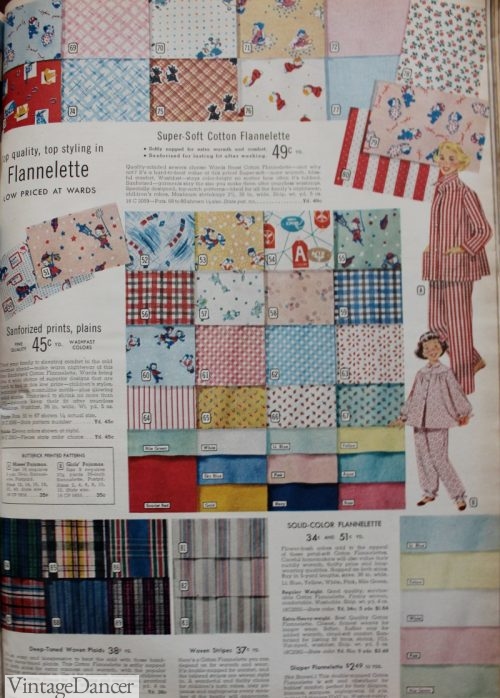
1957 Flannelette for Nightwear
Wool: Wool, the fur of sheep, come in two types: worsted and woolen. Worsted wool fabrics (long flat hairs) are gabardine, wool sharkskin, and serge. Woolen fabrics (short and thick) are tweed, velour, and coating materials. Since wool is very warm, it is a prime winter material for coats, sweaters, suits, dresses, and scarves. Menswear favored textured wool for suits and coats.
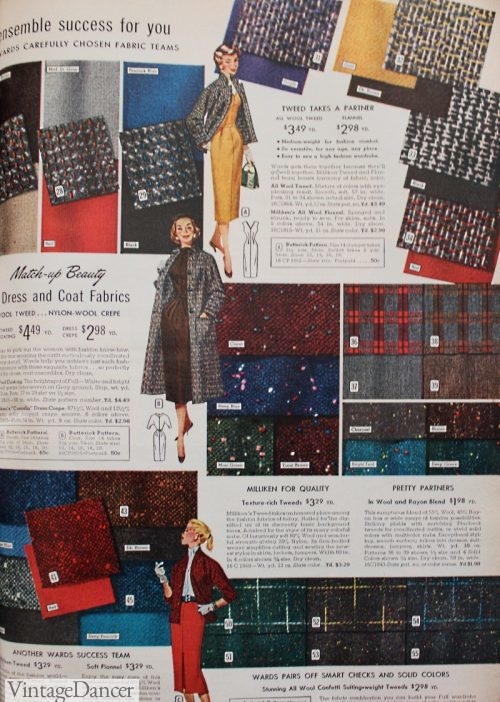
1957 Wool Tweeds
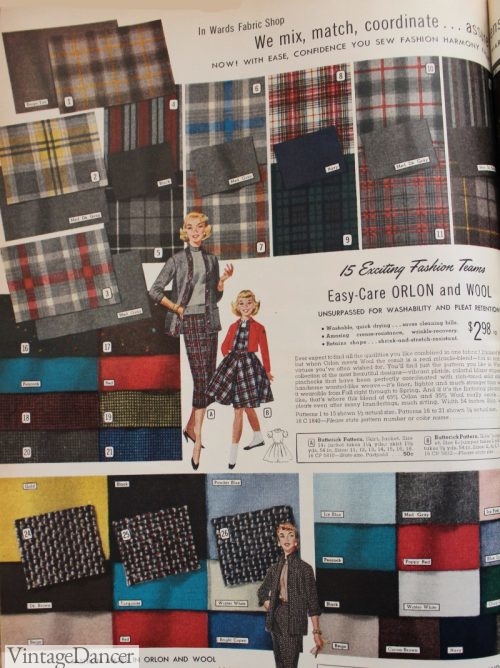
1957 Orlon and Wool Blend Fabric

1955 Men’s Wool Suit Fabrics
Indian Head Cloth: A popular brand of cotton cloth with a linen feel, it was medium-heavy but very durable, neat, crisp, and versatile. In the 1950s, the company advertised the fabric towards home decor, table linen, and crafting where it flourished. In fashion, this “All Purpose Cotton” was used for skirts, dresses and children’s play clothes. In the mid ’50s, they were known for novelty prints, many with ethnic, folk, or world travel themes.
Indian Head Cloth is highly collectible today. It has stood the test of time very well. Vintage garments still look brand new.
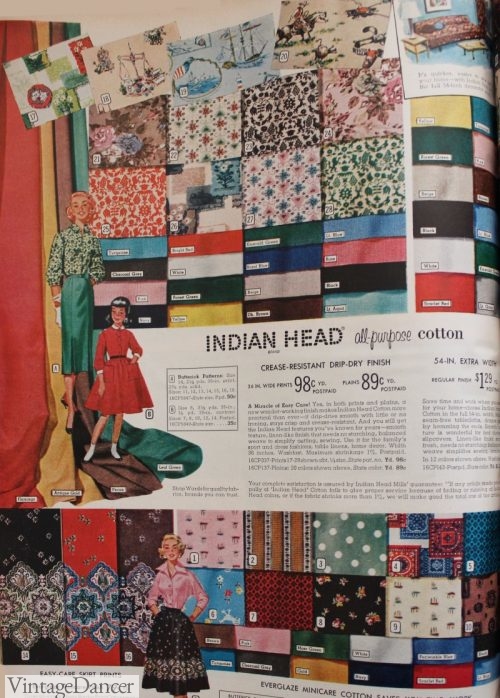
1957 Indian Head Cloth

1958 Indian Head Fabric
Nylon: A true synthetic that can be either smooth (stockings) or coarse (sweaters). It is similar to rayon but is flame resistant and also holds little water, making it ideal for swimwear and lingerie.
More Synthetics: The 1950s were the decade of new man-made materials. Fabric that was easy to wash, did not shrink, did not wrinkle, and held dye in all sorts of colors was the savior of tired housewives and working women. Some of the synthetics and their primary usage were Dacron (suiting), Dynel (uniforms), Orlon (outerwear), and Acrilan (knits). Most synthetics were blended with natural fibers for even more variety.
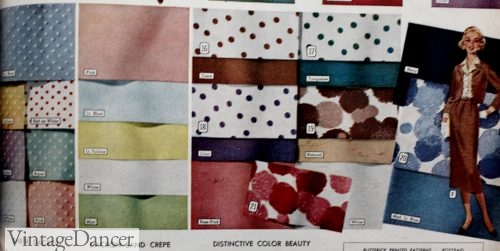
1958 Dracon Synthetic Fabrics – Sheer, Crepe
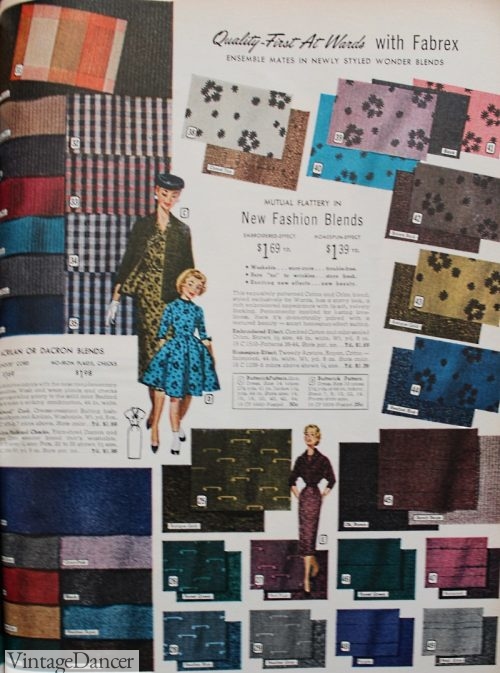
1957 Synthetic Blend Fabrics
1950s Prints
There are some classic prints that are part of the 1950s, just as they were in the 1920s to 1960s, too.
Polka Dots: Polka dots were common in the 1920s through the 1960s. Small and large, the 1950s, for the most part, preferred large dot prints. Some were a mix of large and small dots, too. When sewing a 1950s dress, you can’t go wrong with using a polka dot fabric. They are very popular among ready-made retro dresses.
Plaid: In the 1950s, plaid was the most popular print for both women and men. Small plaids, large plaids and plaids in any color for spring and winter were made into every type of garment. House dresses and afternoon dresses, skirts, pants and tops brought a casualness to the look. Plaid shirts for men was also a casual style year-round. In winter, both women and men wore plaid coats and jackets. Plaid prints were big and bold. Rarely were they small prints.
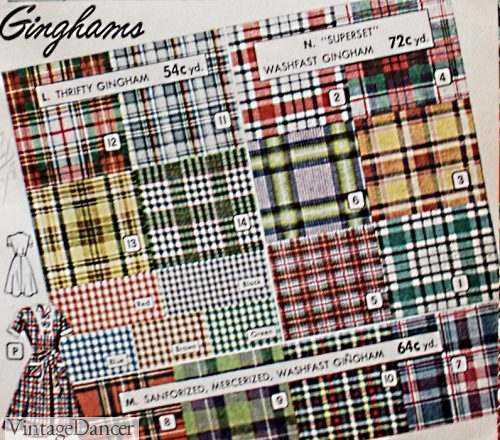
1951 Gingham Plaids
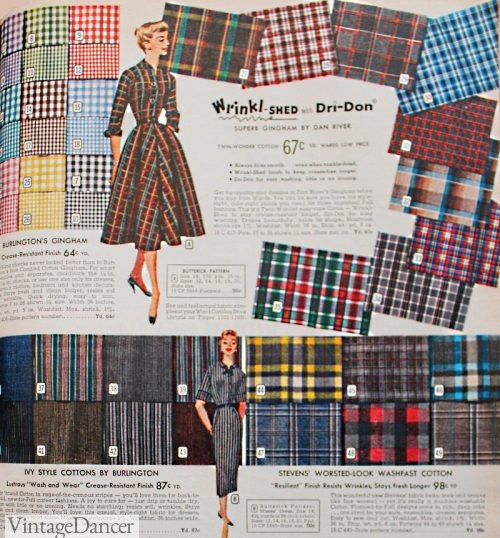
1957 Dri-Don Synthetic and Cotton Plaid Fabrics
Gingham Checks: Small checks, especially in pastel colors, were very popular in the 1950s and again in the early 1960s. Many westernwear clothes used gingham check fabric to make summer tops and skirts. Springtime was the best time to wear check dresses and sportswear. Needless to say, children’s clothing also came in check prints.
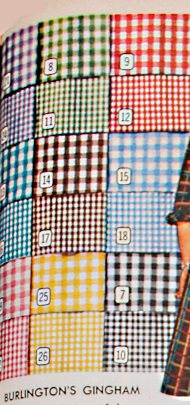
1957 Gingham Checks
Floral: Like most prints of the 1950s, floral prints were big… in size. Large single flowers with a handpainted feel dominated the decade. Tropical leaves, trees, and animals were also trendy.
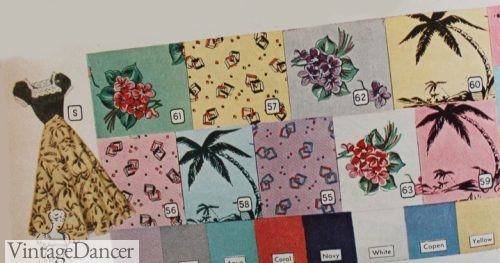
1951 floral and tropical prints
Abstract Prints: The abstract art movement was making way into fashion by the late 1940s. Squiggly lines, interpretations of nature scenes, multi color stripes, and even paisley made an appearance. These are the designs that make up the bulk of 1950s prints as well.

1951 Percale Cotton Prints
Where to buy 1950s fabrics:
Here are some sites that sell vintage fabrics:
- Rick Rack – Original fabrics from the 1950s- mostly cotton prints.
- Antique Fabric – Large collection of original fabrics.
- Vintage Fabrics (AU) – Many colorful fabrics for home and clothing. Ships worldwide.
- Donna Flower (UK) – Charming collection of 1950s Fabric.
- Fabric.com – Another source for classic vintage and cute novelty prints.
- Telalinda – 1920s-1940s reproduction fabrics.
- Thai Silks – A huge assortment of silks and silk blends.
- Damask Raven – Silks appropriate for historical clothing.
- Maltings Fabrics (UK) – Early 20th-century reproduction fabrics.
- Spoon Flower – Vintage reproduction or inspired designs printed on a variety of fabrics.
- Liberty Fabrics (UK) – Cotton and lawn printed fabrics. Also silk and linen. You can find this brand at most USA quality fabric shops.
- Farm House Fabrics – Cotton, lawn, suiting, silk and more.
- Til The Sun Goes Down (UK) – Vintage inspired designs from the 20s-60s.
- B Back and Sons – Wool, cashmere and silk. Wool suiting ideal for menswear.
- Dharma Trading – Dyeable silk, cotton, rayon and linen fabrics.
- Mood Fabrics – Designer fashion fabrics, all kinds. Trims and leather, too.
- Fashion Fabrics Club – More fashion fabrics.
- Fabric Mart Fabrics – Organized by fabric type.
- Farthingale – Corset, garter, bra making supplies and some fabric.
Vintage notions for sale:
- The Button Bower – Buttons, buttons, buttons!
- Accessories of Old – Beads, buttons, trim, and more.
- VintageButtons.net – Buttons, jewelry and more.
Where to buy 1950s patterns:
There are a handful of reproduction pattern makers, and each has their own level of difficulty. I recommend doing an online search for a review of a pattern before buying one. Also, patternreview.com is an excellent source for reviews and online sewing lessons.



